|
The
|
THE BURGENLAND BUNCH NEWS - No. 306 February 29, 2020, © 2020 by The Burgenland Bunch All rights reserved. Permission to copy excerpts granted if credit is provided. Editor: Thomas Steichen (email: tj.steichen@comcast.net) BB Home Page: the-burgenland-bunch.org BB Newsletter Archives: BB Newsletter BB Facebook Page: TheBurgenlandBunchOFFICIAL Our 24th year. The Burgenland Bunch Newsletter is issued monthly online. The BB was founded in 1997 by Gerald Berghold, who died in August 2008. |
| Current Status Of The BB: * Members: Members: 2924 * Surname Entries: 8926 * Query Board Entries: 5792 * Staff Members: 13 |
|
1) THE PRESIDENT'S CORNER (by Tom Steichen)  As
for this month's collection of bits and pieces (Article 1), it begins with a minor
update about the Matriken.AT site (including a thought on a potential BB project), continues with a request
for participants in a Burgenland-related survey (I participated and I recommend that you do too!),
reports on the new Burgenland government team, mentions a new House Number Translation List (for
Olbendorf), provides a member review of the Matriken.AT site (with emphasis on the Lockenhaus records),
discusses Burgenland's preparation for the coronavirus, and then closes with our regular tidbit features, the
monthly BB Facebook report, book sales (with some analysis), a recipe and a cartoon. As
for this month's collection of bits and pieces (Article 1), it begins with a minor
update about the Matriken.AT site (including a thought on a potential BB project), continues with a request
for participants in a Burgenland-related survey (I participated and I recommend that you do too!),
reports on the new Burgenland government team, mentions a new House Number Translation List (for
Olbendorf), provides a member review of the Matriken.AT site (with emphasis on the Lockenhaus records),
discusses Burgenland's preparation for the coronavirus, and then closes with our regular tidbit features, the
monthly BB Facebook report, book sales (with some analysis), a recipe and a cartoon.Article 2 concerns itself with the whys and whats of or, if you will, the Rules for Keeping Catholic Church Registers in Austria. Given the availability of the older Eisenstadt Diocese records, I felt it was timely to draw attention to the work of Prof. Felix Gundacker in documenting the history of church registers in the Austro-Hungarian Empire. My article extracts and/or summarizes some information from his 2018 work on this topic. The remaining articles are our standard sections: Historical Newsletter Articles, Ethnic Events and Emigrant Obituaries.  Online
Burgenland Catholic Church Books: Nothing particularly significant has changed within the current beta online
implementation of the Matriken (register books) of the Catholic Diocese of Eisenstadt this month. There were a few
new parishes added (the current count is 63 online [of the intended 172 parishes], which is just a few more than the initial
implementation); none of the implementation issues I previously mentioned have been corrected. Online
Burgenland Catholic Church Books: Nothing particularly significant has changed within the current beta online
implementation of the Matriken (register books) of the Catholic Diocese of Eisenstadt this month. There were a few
new parishes added (the current count is 63 online [of the intended 172 parishes], which is just a few more than the initial
implementation); none of the implementation issues I previously mentioned have been corrected.I am aware that some BB members, whose parish collections are already online, have been working diligently and are reaping much new knowledge about their ancestral lines. Unfortunately, they are also facing the same type of issues I noted in the collection I experimented with: most critically, pages out of order, with little date information on the pages to assist easy reordering of the pages. Given this, perhaps the most useful project we, the BB membership, could take on would be to document the correct ordering of pages in each collection and put it online at the BB site for the benefit of future researchers; if you have documented a record set in this way, please consider sharing it with me; I'll start thinking about how to put them online in a consistent format. 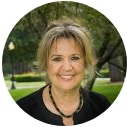 Survey
Participants Wanted: Patricia Nemetz-Mills, a professor of Strategic and Operations Management at
Eastern Washington University (and a BB member), is on sabbatical as a visiting scholar at Vienna University. As part
of her role in Vienna, she is working on a study of Culture, Nostalgia, and Immigration that is focused on both
Burgenländers and immigrants from Burgenland. She is interested in having BB members, whether emigrants from Burgenland or
descendants of emigrants, participate anonymously in her study by filling out an online survey. Survey
Participants Wanted: Patricia Nemetz-Mills, a professor of Strategic and Operations Management at
Eastern Washington University (and a BB member), is on sabbatical as a visiting scholar at Vienna University. As part
of her role in Vienna, she is working on a study of Culture, Nostalgia, and Immigration that is focused on both
Burgenländers and immigrants from Burgenland. She is interested in having BB members, whether emigrants from Burgenland or
descendants of emigrants, participate anonymously in her study by filling out an online survey.The survey is relatively short (it should take maybe 10 minutes at most) and asks mostly for opinions and feelings about some picture sets. There are also a few general demographic questions (but none are intrusive).  The survey is available via the
online "SurveyMonkey" platform and is located for English-speakers here: The survey is available via the
online "SurveyMonkey" platform and is located for English-speakers here: https://www.surveymonkey.com/r/8526CCN. For German-speakers residing in Burgenland and nearby locations (für Deutschsprachige mit Wohnsitz im Burgenland und in der Nähe) the German-language survey is here: https://www.surveymonkey.com/r/ZPZ668N. Professor Nemetz-Mills is a descendant of Burgenland emigrants and grew up in the Lehigh Valley. Her grandparents were Rudy Schadl and Anna Wunderler, originally from Rábafüzes and Gerersdorf, who were owners of a bar and grill in Northampton, PA. The grill was officially called Rudy's Grill but usually referred to as Schadl's or Schoadl's (the dialect pronunciation). Schadl's was a popular place for immigrant Burgenländers wanting to enjoy "old country" entertainment in the years from 1950 to 1969. The grill next became Anna's Place but changed hands once more in 1972 and became the Edelweiss Haus, which remained a popular ethnic hangout for many years until closing in 2008 (though it did reopen in 2014 for a few more years, but under new management). I have reviewed her study and believe it is well worth supporting. Thus I ask that you consider going to the link above and thoughtfully fill out the questionnaire (I have done so already). Patricia has offered to provide us with a summary of results and her interpretation of what it tells us, which I will share in the newsletter. Current Burgenland Government Team: The slate of individuals in Governor Hans Peter Doskozil's second government has been finalized. The core state government team includes Doskozil as governor, Astrid Eisenkopf as deputy governor, and Christian Illedits, Heinrich Dorner and Daniela Winkler as councilors. Verena Dunst remains president of the state parliament and the SPÖ adds the third president of the state parliament in Kurt Maczek. Robert Hergovich, who had been SPÖ club president under Hans Niessl, returns to that role and Roland Fürst becomes the sole state manager of the SPÖ Burgenland. 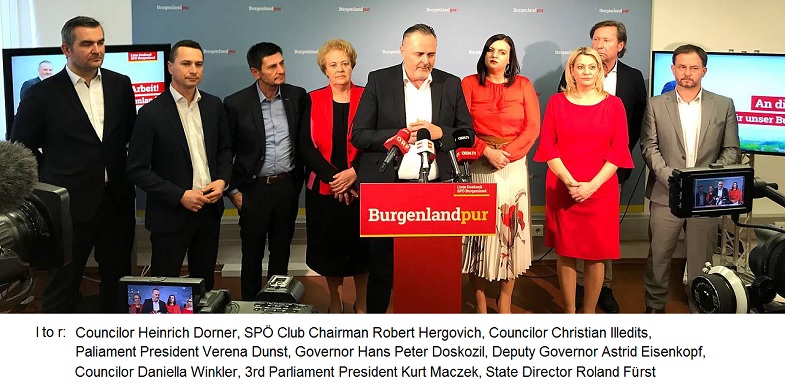 As for the core team assignments, Governor Hans Peter Doskozil is in charge of finance, health and hospitals, staff, asylum, culture, political clubs, EU issues, tourism and security; and Deputy Governor Astrid Eisenkopf's portfolios include women, agriculture, environmental and climate protection, elections and municipalities. The portfolios for the three State Councilors are: for Heinrich Dorner, infrastructure, public transport, housing subsidies, fire services, civil and disaster protection and traffic law issues; for Christian Illedits, social affairs, employee development, sports, digitalization, business and community service; and for Daniela Winkler, education, child care, families and integration. A House Number Translation List for Olbendorf: BB Staff Member and Facebook Page Administrator Patrick Kovacs has kindly provided a house number translation list for the village of Olbendorf. Actually, Patrick provided two lists, the first of which was implemented and put online here: the-burgenland-bunch.org/.../Translation/.../Olbendorf.htm. The second list provides a few edits to the first list, though those edits have yet to be applied as I have not found time to do so (plus I have a few questions about the lists that I need to ask Patrick before I do so!). Regardless, the initial list is online and changes will be few. Enjoy! Review of the Lockenhaus Records at Matriken.at: BB member Mike Schlagel provided a review of the online archive of the Lockenhaus records at the beta Diözese Eisenstadt matriken.at site. Below are his (selected and/or slightly edited) words... Login: your info in the newsletter was very helpful. Available records: ST (Deaths) 1767-1911 Tauf (Baptisms) 1667-1729, 1780-1906 - currently missing 1730-1779 (no info given on why) - Index 1780-1923 (very confusing, as sorted by spelling and then year. Does not contain enough info) TR (Marriages) 1780-1935 - Index 1780-1895 (again very confusing, as sorted by spelling and then year. Does not contain enough info) General Comments: - Website takes a little while to get used to. Most images are clear, but a very small number are out of focus (but readable). Call up times vary, as during the day they are slower. At night, eastern time about 7 to 10 pm, are faster. - The viewer works well with a wheel mouse, so can mouse zoom or use the 1:1 button to fast zoom (hint: set your MS Edge screen to greater than 100% so your 1:1 button jumps you automatically to the desired magnification). - The right and left buttons are ok, but lately I am clicking on the page layout ribbon on the lower screen to move quickly. - As with the FamilySearch films, the original document had the page number written in pencil. This has been a constant source of reference versus hardcopy original, microfilm number, and digital slide number. - The film series and number and slide number are on every slide so you can write down the info (not cut and paste). If one were to screen print the page this would be ideal for record keeping. Will be interesting to see how the download button works and film resolution. - I have been using the BB website Villages list to help decipher the parish name to correspond with the Eisenstadt list. The listing of parishes corresponding to the village names has been very helpful. - Having a second copy of records has its benefits. I compared a few relatives info. Was nice to get duplicate info to confirm my translation of handwriting. Story Time, based on 2nd copy of marriage register. - One of my GGGfathers married in 1848 and, on the FamilySearch film, it shows he was 21 and she was 20 (and had a different last name [Schlogl] than the parents listed). On the Eisenstadt film, it showed the bride to be 40. - After some nights of research to confirm either first marriage or children, two boys were found with same mother being the first name of the wife and last name of her listed parents (Holtzer). - The first marriage was found confirming the husband (Schlogl), wife and 2 boys information. I am still looking for the first husband’s death. - Bottom line, farmer's widow gets pregnant from young hired hand (guess), marries, and has a son 3 months later. In Summary: These new archives have helped me fill in a lot of baptism and marriage dates. Some death dates have been researched due to questions on whether an ancestor died in Burgenland versus some old research with a similar last name who died in Missouri. I had to delete some of the members of one family in my tree who had lived 60+ km away, which did not make sense. Because of the Lockenhaus films, I have replaced them with at least 3 solid generations back in time. I look forward to parish of Pilgersdorf archives to be released, as both sets of my dad’s grandparents were from Burgenland. I replied to Mike about the Indexes: As to the indexes, what you found is pretty much the standard format: by-year groups within alphabetic sections of names. For births, the alphabetization is usually by the first letter of the surname of the child; for marriages, typically by the first letter of the surname of the husband (occasionally you see separate indexes based on the wife’s maiden surname, or see both listed within a single index, but these are rare); death indexes are by the first letter of the surname of the deceased (I can’t recall how they name women but I suspect married surname). Less commonly, the lists are alphabetized by full surnames or by a group of initial letters from the surname. Given names are listed but do not affect the ordering... Rather, the order of entries within an alphabet–by-year sub-section of an index is usually the sequence in which the events were recorded. Again, other formats occur but this is, by far, the most common. Beside the person’s name will be the book number and then either the folio number, page number or sequence number, where a “folio” is a left and right “open book” pair of pages; a “page” is the typical single page (left or right); and a “sequence” number is a number sequentially assigned to a single vital event in the order it was recorded in the year. Usually it takes a little examination to know what kind of number is being recorded in this final column. While I can see why you say the indexes do not contain “enough” info (for example, I’d love to see marriages always indexed by bride surname), they do let you go fairly directly to the full entry for the event you want (presuming you know the name of the person you want and the approximate year of the event, which is usually what the priest had when he had to look up something ...these indexes were designed for the priest’s use, after all).  Coronavirus
in Burgenland? Not yet! However, Burgenland has set up a "Coronavirus Coordination Unit" as a preparative
measure, a unit intended to be communication center among authorities, rescue organizations and hospitals, says governor
Hans Peter Doskozil. Coronavirus
in Burgenland? Not yet! However, Burgenland has set up a "Coronavirus Coordination Unit" as a preparative
measure, a unit intended to be communication center among authorities, rescue organizations and hospitals, says governor
Hans Peter Doskozil.Sonja Windisch, head of the social and health department in the Office of the Burgenland State Government, stated that "It is important that we are prepared, should there be an illness, that we have a place for the person, that they receive medical treatment, that the transport works." However, she also reported that there are no cases in Burgenland currently. Rather, only some concerned citizens have checked in via the new Ministry of Health coronavirus hotline because they were in Italy recently. There is also an effort underway to develop coordination between the Austrian states and its federal government and ministries of the interior and health. 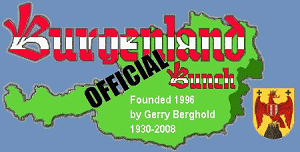 The
Facebook Bunch (from Vanessa Sandhu): The
Facebook Bunch (from Vanessa Sandhu):Greetings Burgenland Bunch! We had another busy month in our group! We now have 1218 members! If you haven’t joined us yet, please do! facebook.com/.../TheBurgenlandBunchOFFICIAL Member Annette Diane Kapple shared her blog post regarding research using Burgenland church books. You can read it here: annettekapple.blogspot.com/...Burgenland-church-books.html The Upper Midwest Burgenland Bunch will be holding their meeting on March 1, 2020, at 1 pm at the Maplewood Library, 3025 Southlawn Drive, St. Paul, MN. Member Christoph Fertl shared a video from Land Burgenland showing the beauty of Lake Neusiedl from above: facebook.com/LandBurgenland/videos/... We are still in need of 7 kits to get Ingrid Schuster’s new Burgenland Ancestor Project up and running on Gedmatch. If you’d like to add your kit, please email Ingrid at pipsi1206@gmail.com. We had lots of translations and record lookups this month. We also had some fun sharing our colorized old photos, courtesy of MyHeritage’s new utility which allows you to colorize a limited number of photos. Be aware that, after a few freebies, they will ask you to purchase a membership to continue altering photos. Choose your favorites if you don’t want to end up paying for a membership! I did not know that there was a limit to the number of photos you could alter and I definitely would have chosen more wisely had I known there was a limit. Have a wonderful day! Vanessa  Update
for book "The Burgenländer Emigration to America": Here is this month's update on purchases of the English issue of
the 3rd edition of Dr. Walter Dujmovits' book "Die Amerika-Wanderung Der Burgenländer." Update
for book "The Burgenländer Emigration to America": Here is this month's update on purchases of the English issue of
the 3rd edition of Dr. Walter Dujmovits' book "Die Amerika-Wanderung Der Burgenländer."Current total sales are 1499 copies, as interested people purchased 7 more books during this past month. As always, the book remains available for online purchase at a list price of $7.41 (which is the production charge for the book, as we purposely choose not to make a profit so we can avoid dealing with the income tax consequences and so you can obtain the book at as low a cost as possible!), plus tax & shipping. See the BB homepage for a link to the information / ordering page and for information about current discounts (there is at least one discount on price or shipping available most of the time... if not, wait a few days and there will be one!). Burgenland Recipes: This recipe for Bejgli / Beigli (Poppy-Seed Bread) was provided by Robert Chapman from his Göltl family recipe collection. He credits his aunt, Louise (Göltl) Bigler, for the recipe and notes that, among "my mother and her three sisters, Aunt Louise was the best cook."  Poppy-Seed
Bread (Bejgli) ala Aunt Louise Poppy-Seed
Bread (Bejgli) ala Aunt LouiseDough, Ingredients: ½ cup water, lukewarm 4½ tsp dry yeast 4 eggs (large) ½ cup lard or shortening, soft 1½ cup whole milk, warm ½ cup sugar 2 tsp salt 8 cups flour Preparation: 1. Prepare and pre-measure ingredients. 2. In a small bowl, place the warm water then the yeast and let it dissolve (about 5 minutes or until foamy). 3. In a large bowl, beat the eggs then stir in the lard or shortening, milk, sugar, salt and dissolved yeast mixture until combined. 4. Add the flour, 1 cup at a time while mixing with a wooden spoon. Transfer the dough to a lightly floured work surface and knead it until it is smooth and elastic (about 5-7 minutes). The dough should be soft but not sticky. If the dough is too sticky, add more flour. 5. Form the dough into a ball and transfer to the large bowl. Cover with plastic wrap place in a warm, draft-free spot. Let it rise to double in bulk (about 1½-2 hours). 6. Prepare the filling. Poppy-Seed Filling, Ingredients: 1½ lbs poppy seeds 1 cup of raisins 4 cups of milk 3 cups of sugar 4 ounces of butter Filling Instructions: 6a. Wash and grind/mince poppy seeds and raisins, then put them in a sauce pan and add the milk, sugar and butter. 6b. Cook on medium heat (stirring often) until mixture thickens to a spreadable consistency. Preparation, continued: 7. Using a sharp knife or pastry cutter, divide the dough into two equal parts. Roll out each piece into a rectangle (about 14x12 inches). 8. Spread the prepared filling onto the dough rectangles leaving a margin of at least one inch on all edges, then roll them up lengthwise, ensuring the rolls remain tight and firm. 9. Cover rolls with a cloth and let them rise again (about 45-60 minutes). 10. Carefully transfer the rolls onto parchment paper lined baking sheet. To obtain a golden-brown color, brush rolls with egg wash (1 egg + 1 teaspoon of water, well mixed). 11. Bake in a 350 degree, preheated oven until golden brown and firm to the touch (about 30 minutes). Allow rolls to cool (about 15-30 minutes). 12. Slice just before serving dust with powdered sugar then arrange the slices overlapped (like roof tiles) on a plate. 13. Serve. Options/Substitutes - Egg Wash: (one egg + a tablespoon of water mixed) - Powdered sugar for dusting - Other fillings (e.g., prune mixture walnut mixture or jelly). This sweet dough recipe can be used for donuts.  Note:
We have updated the recipes sortable list with links directly to the recipes or food-related
articles published in our past newsletters. You can access the list by clicking our recipe box (to the right). Thanks to the
contributions of our members over the years, we have quite a collection of Burgenland recipes, some with several variations. Note:
We have updated the recipes sortable list with links directly to the recipes or food-related
articles published in our past newsletters. You can access the list by clicking our recipe box (to the right). Thanks to the
contributions of our members over the years, we have quite a collection of Burgenland recipes, some with several variations.However, we have now used up our unpublished recipes... thus this recipe section will become dormant until we receive more.So, if you have a favorite family recipe, please consider sharing it with us. We will be happy to publish it. Our older relatives, sadly, aren't with us forever, so don't allow your favorite ethnic dish to be lost to future generations. You can send your recipe to BB Recipes Editor, Alan Varga. Thanks! Cartoon of the Month:  |
2) THE RULES FOR KEEPING CATHOLIC CHURCH REGISTERS Given the advent of the Matriken.AT site (clearly the most significant recent event affecting BB research), it seems appropriate to talk about why the records exist and why they have the ever-changing format that we see as we move through the years these records cover. 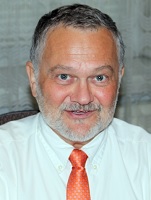 My
main source for much of what I'll write on this topic is an extensive 2018 online publication by Prof. Ing. Felix
Gundacker titled "The Keeping of Church Registers by the Roman Catholic and Protestant Parishes in Austria." My
main source for much of what I'll write on this topic is an extensive 2018 online publication by Prof. Ing. Felix
Gundacker titled "The Keeping of Church Registers by the Roman Catholic and Protestant Parishes in Austria."Professor Gundacker is a Vienna-based professional genealogist, offering paid genealogical research to private customers and genealogical seminars and workshops to the public (see more at www.FelixGundacker.at). He is also the motivating force behind the free genealogical data site, www.genteam.at, and has published a number of other guides related to Austro-Hungarian genealogical research. The document I cite above is much more comprehensive than the parts I will cover (I'll ignore the parts on non-Catholic records and the parts for "non-Burgenland" regions, though those denominations and regions under Austro-Hungarian rule were affected almost identically). Gundacker's document also includes numerous transcripts of the original-language decrees that established the rules for the keeping of church records; these I'll also ignore. Regardless, I hope the parts I do cover will give you a better understanding of why the available records exist and are of their changing nature. I'll slip in a few explanatory words and then jump solely to Felix's work. He states that:
In general, Matriken is from the Late Latin matricula, meaning "public roll or register," and is related to
matriculate: "to enroll as a member," so it makes sense that the churches took up this term (and that the Eisenstadt
Diocese uses the term for their website). |
3) HISTORICAL BB NEWSLETTER ARTICLES Editor: This is part of our series designed to recycle interesting articles from the BB Newsletters of past years. I again go back twenty years this time, to when Gerry wrote about the time needed by emigrants to travel from Burgenland to the US. THE BURGENLAND BUNCH NEWS - No. 75A February 29, 2000 TRAVEL TIME, BURGENLAND TO NEW YORK (G. Berghold) Denis Ardinger asks the following question:  I do
have a question that may be of value to others that I have not seen specifically addressed and that concerns the travel time
between Burgenland and New York City. I found in the newsletter that the travel time could have been as short as 10 days.
However, I thought it was much longer based on information on the Ellis Island website where it says that the European ports
required emigrants to be at the embarkation port many days, and sometimes weeks, in advance of departure. I do
have a question that may be of value to others that I have not seen specifically addressed and that concerns the travel time
between Burgenland and New York City. I found in the newsletter that the travel time could have been as short as 10 days.
However, I thought it was much longer based on information on the Ellis Island website where it says that the European ports
required emigrants to be at the embarkation port many days, and sometimes weeks, in advance of departure.Answer (in part): Hello Dennis ...one of the things you'll find in our archives are some itineraries. You'll notice that they all differ depending on timeframe and route (before and after the establishment of steam ships and rail transport among other variables). Some ships in the 1890-1920 period, could make the voyage in as little as 7 days, others required as much as 14. Size of the ships grew enormously during this period (2M tons in 1870 to over 50M tons by 1914). Weather and schedules were, of course, a factor. It was not unusual for immigrants to spend a few weeks waiting for a departure or in quarantine during epidemics. Travel to port of embarkation was also subject to many variables. There were also itineraries involving transfers (indirect migration) to another ship in England or France, although lines operating out of Hamburg and Bremen and Antwerp were mostly direct (between 1870-1910, 1.3 out of 1.8 million eastern European migrants used the first two ports). During the period in question, you'll also find that "travel agents" were established throughout the Burgenland (there were five, I believe, in Güssing alone). These would sell a "ticket" for travel to port of embarkation, ultimate port of destination, and on to US destination, very similar to what agents do today [Ed: this was written 20 years ago!]. Migrants making those kind of arrangements were sped to their destinations, any governmental or health interference aside. I've even seen early-1900s' cases where these "tickets" were purchased in the US by relatives and forwarded through agents in Europe. My own maternal grandmother (1905 arrival in NY), her sister and mother received their rail and ship "tickets" this way from her brother in Allentown. In 1871, the White Star "Oceanic" crossed from the UK in 8 to 10 days. In 1890, HAPAG's "Augusta Victoria" made 7 days, Southampton to NY, down from 10-12 days for older ships. From this point on, a week became the norm for the larger, more-modern vessels (which were being built to accommodate the lucrative immigrant trade). So, assuming a peasant "ticketed" in Güssing could make the proper connections, he could easily reach Hamburg in 2 days (rail and river transport), spend one day clearing port, and reach NY 7-10 days later. Total trip, 10-13 days. With scheduling or health problems or bureaucratic interference, yes this could easily expand to a month or more. You should also be aware that up to 25% of migrants returned (most being seasonal "arbeiter" = workers). Short travel time and cheap fares is what made this possible. You might also read newsletters nos. 7, 13 and 36 if you haven't already done so. The book "Crossings, The Great Transatlantic Migrations, 1870-1914," by Walter Nugent, Indiana Univ. Press, 1995, is well-recommended and is the source of much of what I've stated. |
4) ETHNIC EVENTS LEHIGH VALLEY, PA Sunday, March 1: Sunday Dance at the Coplay Sängerbund. Music by the Emil Schanta Band. Info: www.coplaysaengerbund.com Saturday, March 7: Fasching at the Reading Liederkranz. Music by the Josef Kroboth Orchestra. Info: www.readingliederkranz.com Sunday, March 8: Cabbage Hill Day at the Lancaster Liederkranz. Entertainment by Die Immergrün Musikanten and club folk dancers and singers. Info: www.lancasterliederkranz.com Sunday, March 8: Sunday Dance at the Coplay Sängerbund. Music by the Josef Kroboth Orchestra. Info: www.coplaysaengerbund.com. Saturday, March 14: Bockbierfest at the Lancaster Liederkranz. Music by Heidi & Heimatecho. Info: www.lancasterliederkranz.com Sunday, March 15: St. Patrick's Day Dance at the Coplay Sängerbund. Entertainment by Die Immergrün Musikanten and Irish dancers. Info: www.coplaysaengerbund.com Sunday, March 22: Schlachtfest at the Holy Family Club in Nazareth. Music by the Josef Kroboth Orchestra. Info: (610) 704-0803 Sunday, March 29: Sunday Dance at the Coplay Sängerbund. Music by the Jolly Bavarians. Info: www.coplaysaengerbund.com NEW BRITAIN, CT Friday, Mar 6, 7 pm: Heimat Abend. Austrian Donau Club, 545 Arch Street, $3. Music by Frank Billowitz. Friday, Mar 20, 7:30 pm: Heurigan Abend. Austrian Donau Club, 545 Arch Street, $3. Music by Schachtelgebirger Musikanten. ST. LOUIS, MO (none) UPPER MIDWEST Sunday, March 1, 1 pm: Upper Midwest Burgenland Bunch meeting at the Maplewood Library located at 3025 Southlawn Dr. St. Paul, MN. Some of us will be there sooner. |
5) BURGENLAND EMIGRANT OBITUARIES Joseph Paukovits  Joseph "Joe" F. Paukovits, 98, of
Allentown, Pennsylvania, died on January 31, 2020 at St. Mary Villa in Lansdale. Joseph "Joe" F. Paukovits, 98, of
Allentown, Pennsylvania, died on January 31, 2020 at St. Mary Villa in Lansdale.He was the husband of the late Mary (Sabara) Paukovits. Born on March 12, 1921 in Szentpéterfa (Petrovo Selo/Prostrum), Hungary, Joe was the son of the late Stephen and Maria (Geosits) Paukovits. He came to America with his father, Stephen, in 1938. Joe was a Corporal Technician in the U.S. Army. He became a U.S. citizen in 1944. He was the recipient of the World War II Victory Metal and 3 Bronze Stars. Joe retired from Phoenix Clothes. He was a member of the American Legion and the Ss. Peter & Paul Hungarian Society. Joe lived in Allentown until 2010, when he relocated to Audubon, PA to live with cousins, Louis & Theresia Paukovits. In 2015, he moved to St. Mary Villa, Lansdale. Joe was predeceased by his wife, Mary; sister- in-law, Anna Sabara; and his cousin, Louis Paukovits. He is survived by cousins, Theresia Paukovits, Mary Ann Silvestri, Monica Hilty and their families. Services: A Mass of Christian Burial will be celebrated on Friday, February 7th at 11:00 a.m. in Queenship of Mary Catholic Church, 1324 Newport Ave, Northampton. A viewing will be held at Reichel Funeral Home, 326 E. 21st Street, Northampton on Friday from 9:30 to 10:30 a.m. Burial will follow in Our Lady of Hungary Cemetery, Northampton. In lieu of flowers, please make contributions in his memory to Queenship of Mary Catholic Church in loving memory of Joe. Published in Morning Call on Feb. 3, 2020 |
| END OF NEWSLETTER (Even good things must end!) |
|
Burgenland Bunch Newsletter, copyright © 2020 by The Burgenland Bunch |
 News
News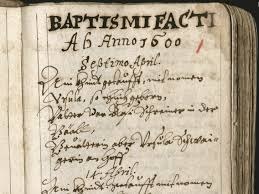 Felix states that the oldest
Austrian church register is “Sterbebuch 1” (register of deaths) of the parish of St. Stephan in Vienna, which
starts in the year 1523. he also notes that only 78 Austrian parishes have church records from before the year 1600 "...but
many more may have existed but were lost in the course of the centuries through sloppiness, wars or fires, or during the
time of Protestantism up until 1624/1631." He further notes that, for the eastern parts of Lower Austria, many church
registers only start after the year 1683 (second Turkish siege of Vienna) or 1709 (Kuruc uprisings). This final point also
applies directly to Burgenland and the nearby parts of Hungary.
Felix states that the oldest
Austrian church register is “Sterbebuch 1” (register of deaths) of the parish of St. Stephan in Vienna, which
starts in the year 1523. he also notes that only 78 Austrian parishes have church records from before the year 1600 "...but
many more may have existed but were lost in the course of the centuries through sloppiness, wars or fires, or during the
time of Protestantism up until 1624/1631." He further notes that, for the eastern parts of Lower Austria, many church
registers only start after the year 1683 (second Turkish siege of Vienna) or 1709 (Kuruc uprisings). This final point also
applies directly to Burgenland and the nearby parts of Hungary.